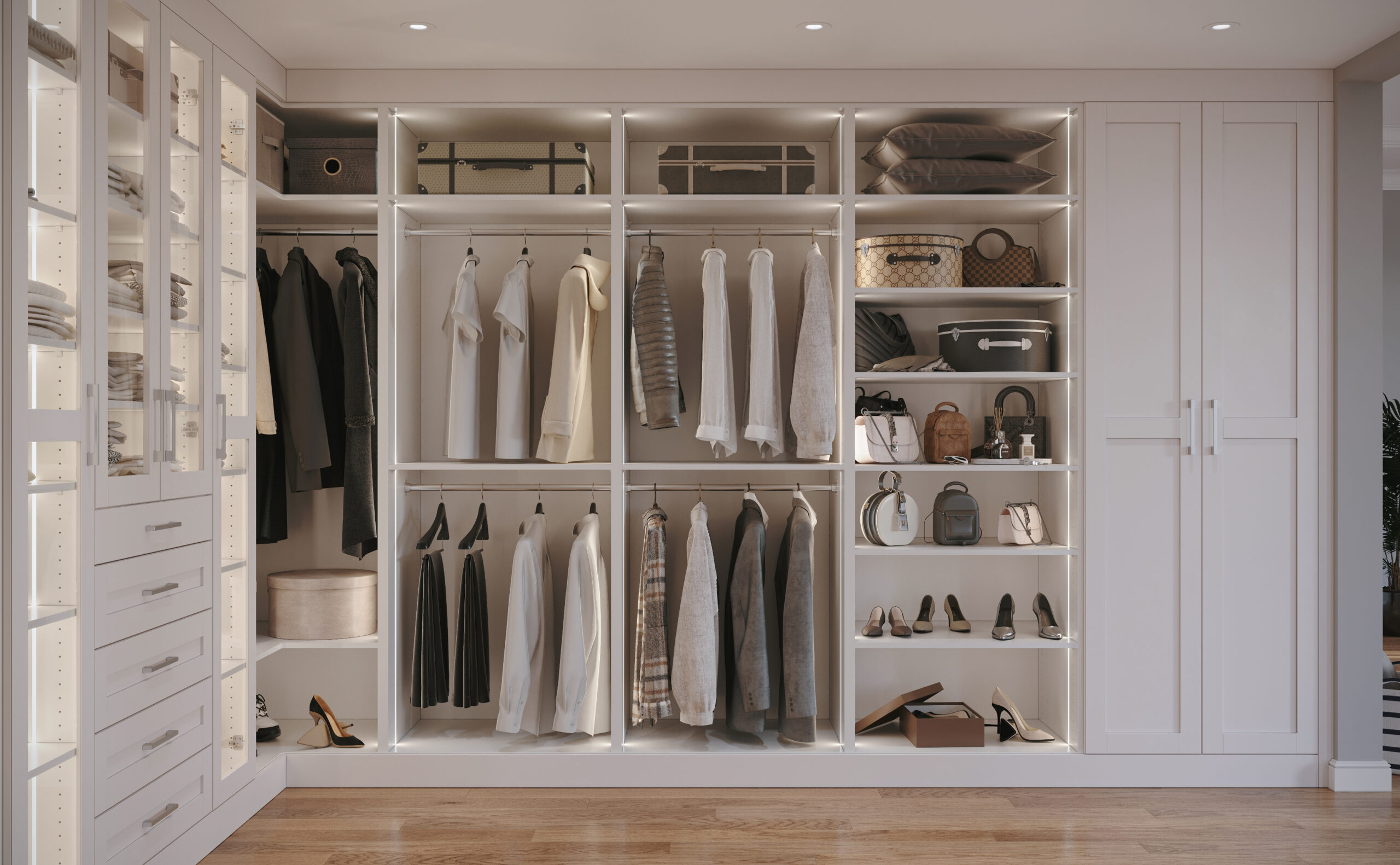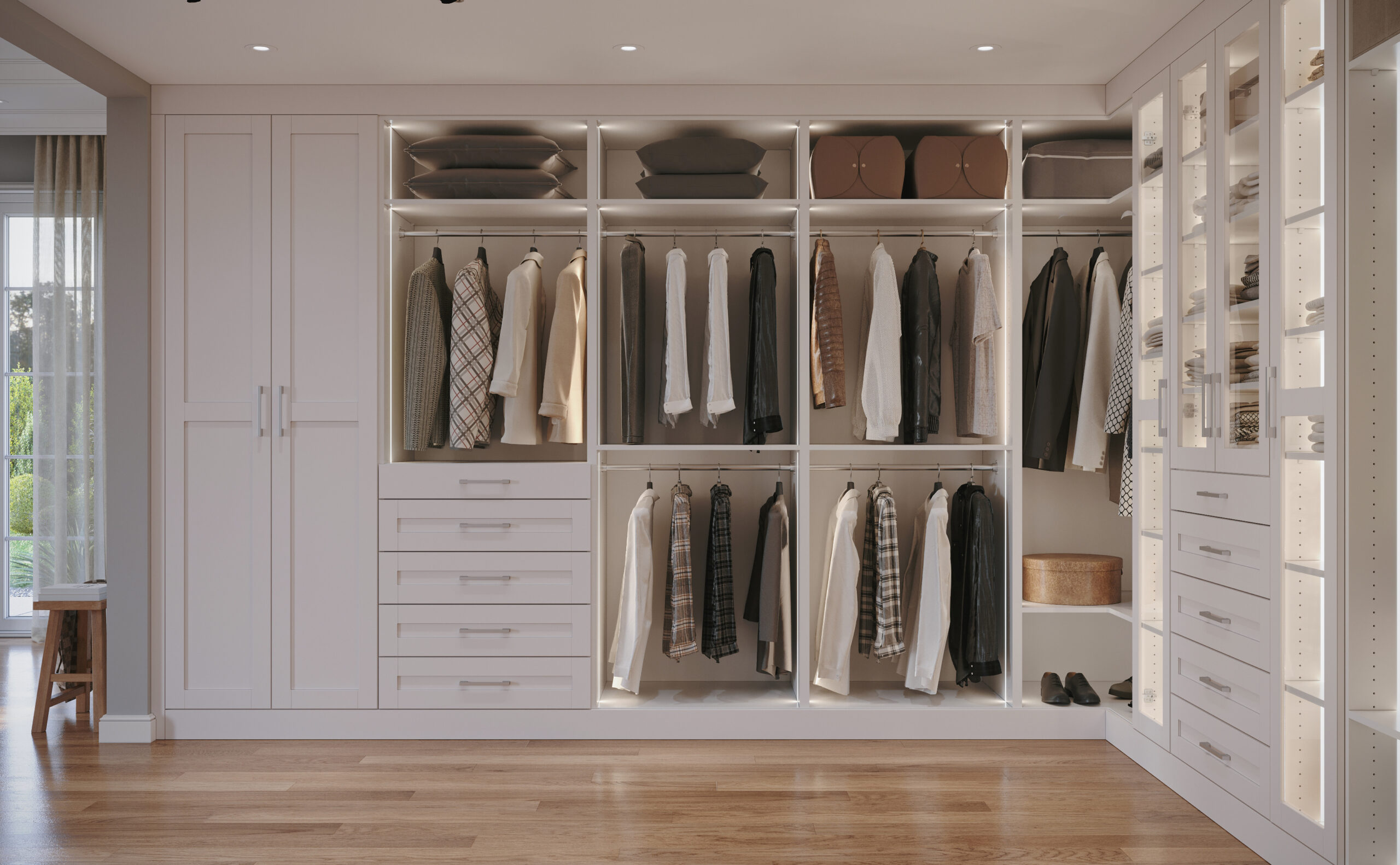DISCOUNTS ARE IN BLOOM! 30% OFF ALL CLOSETS!
Ciri Blog

Designing Your Dream Closet: How Pi Closets Makes It Simple and Affordable
Every morning, millions of people stand in front of their closets, frustrated by the chaos of cramped spaces, poor organization, and inefficient storage solutions. The dream of having a beautifully organized, functional closet often feels like a luxury reserved for celebrity homes and design magazines. However, creating your perfect closet doesn’t have to be complicated or expensive. With the right approach, smart planning, and innovative solutions, anyone can transform their storage space into a functional, aesthetically pleasing sanctuary that makes daily routines smoother and more enjoyable.
Understanding Your Closet Needs
Before diving into design solutions, it’s essential to understand what makes a closet truly functional. The perfect closet isn’t just about having enough space—it’s about having the right kind of space for your specific lifestyle, wardrobe, and daily routines. Start by conducting a thorough assessment of your current wardrobe. Categorize your items by type, frequency of use, and seasonal requirements. This inventory will help you understand exactly what storage solutions you need.
Consider your daily routine and how you interact with your closet. Do you get dressed quickly in the morning, or do you prefer to take time choosing outfits? Do you travel frequently and need easy access to luggage? Are you sharing the space with a partner? These lifestyle factors significantly impact the optimal design for your space.
The key to successful closet design lies in maximizing both accessibility and storage capacity. Items you use daily should be at eye level and within easy reach, while seasonal or rarely used items can be stored higher up or in less accessible areas. This principle of functional zoning ensures that your closet works with your habits rather than against them.
Space Planning and Layout Optimization
Effective closet design begins with smart space planning. Even the smallest closets can be transformed into highly functional spaces with the right layout strategy. The first step is accurately measuring your space, including height, width, depth, and any architectural features like sloped ceilings, windows, or electrical outlets that might impact your design.
Consider the “closet work triangle” concept, similar to kitchen design. This involves creating an efficient flow between your hanging clothes, folded items, and accessories. The goal is to minimize movement while getting dressed and putting clothes away.
Vertical space is often the most underutilized aspect of closet design. Most standard closets have significant height that goes unused above the single hanging rod. By incorporating double hanging systems, you can instantly double your hanging capacity for shorter items like shirts, blouses, and pants. Reserve single-height hanging for longer items like dresses and coats.
The depth of your closet also presents opportunities for creative solutions. Standard closets are typically 24 inches deep, but many people only use the front 12 inches effectively. Consider pull-out drawers, rotating carousels, or tiered hanging systems that make use of the full depth of your space.
Smart Storage Solutions for Every Budget
Creating an organized closet doesn’t require a complete renovation or expensive custom systems. There are numerous affordable solutions that can dramatically improve your storage capacity and organization. Modular shelving systems offer flexibility and can grow with your changing needs. These systems typically use adjustable shelves and can be reconfigured as your wardrobe evolves.
Drawer systems are crucial for storing folded items, undergarments, and accessories. However, built-in drawers can be expensive. Consider using stackable drawer units or repurposing existing furniture pieces. Clear, stackable containers work well for seasonal items and help you see contents at a glance.
Maximize hanging space with cascading hangers, which allow you to hang multiple items vertically, and slim-profile hangers that take up less rod space. Specialty hangers for specific items like belts, ties, scarves, and tank tops can help organize accessories efficiently.
Don’t overlook the potential of closet doors and walls. Over-the-door organizers can hold shoes, accessories, or cleaning supplies. Wall-mounted hooks and small shelves can provide additional storage for frequently used items.
The Role of Lighting in Closet Design
Proper lighting is often overlooked but is essential for a functional closet. Poor lighting makes it difficult to see colors accurately, find specific items, and creates an uninviting atmosphere. Natural light is ideal, but most closets don’t have windows, making artificial lighting crucial.
LED strip lighting has revolutionized closet illumination. These energy-efficient lights can be installed under shelves, around mirrors, or along hanging rods to provide even, bright lighting throughout the space. Motion-sensor lights add convenience by automatically illuminating the space when you enter.
Consider color temperature when choosing lighting. Warm white light (2700K-3000K) creates a cozy atmosphere but may not show true colors. Cool white light (4000K-5000K) provides better color accuracy for choosing outfits. Some people prefer adjustable color temperature systems that can change throughout the day.
Battery-operated LED lights offer easy installation without requiring electrical work, making them perfect for renters or those on tight budgets. Puck lights, strip lights, and even simple LED bulbs can dramatically improve closet functionality.
Maximizing Small Closet Spaces
Small closets present unique challenges but also opportunities for creative solutions. The key is thinking vertically and using every inch of available space efficiently. Floor-to-ceiling storage systems make use of the full height of your closet, while adjustable shelving allows you to customize the space for your specific needs.
Consider using the space above your closet if it extends to the ceiling. This area is perfect for storing seasonal items, luggage, or rarely used belongings. Vacuum-sealed storage bags can compress bulky items like comforters and winter coats, freeing up valuable space.
Multi-functional furniture pieces work well in small spaces. An ottoman with hidden storage can hold shoes while providing a place to sit while getting dressed. A narrow dresser can fit in many closets and provide significant drawer storage.
Think creatively about unconventional storage spaces. The floor of your closet can accommodate shoe racks or storage cubes. The back wall might have space for a slim shelving unit or hanging organizer.
Incorporating Technology and Modern Features
Modern closet design increasingly incorporates technology to enhance functionality and convenience. Smart home integration allows you to control lighting, ventilation, and even wardrobe tracking through smartphone apps or voice commands.
Automated features like motorized hanging rods that lower to bring high items within reach are becoming more affordable and accessible. These features are particularly valuable for people with mobility limitations or very high closets.
Wardrobe management apps can help you catalog your clothing, plan outfits, and even suggest what to wear based on weather or calendar events. Some people use simple photos to create a digital wardrobe inventory, making it easier to shop for new items and avoid duplicates.
Climate control is important for protecting clothing investments. Dehumidifiers, cedar blocks, or moisture-absorbing products help prevent mold, mildew, and pest damage. Proper ventilation also extends the life of your clothing and keeps the closet fresh.
Sustainable and Eco-Friendly Closet Solutions
Sustainability is becoming increasingly important in home design, and closets are no exception. Choose durable materials and systems that will last for years, reducing the need for frequent replacements. Solid wood, metal, and high-quality laminate systems typically offer better longevity than particle board alternatives.
Repurposing existing furniture and materials is both economical and environmentally friendly. Old dressers can be converted into closet organizers, and vintage suitcases can become stylish storage containers for seasonal items.
Consider the environmental impact of your clothing storage choices. Natural materials like cedar, bamboo, and cotton are renewable and biodegradable alternatives to synthetic organizers. Energy-efficient LED lighting reduces electricity consumption compared to traditional incandescent bulbs.
Proper closet organization can also support sustainable fashion choices by making it easier to see and use all your clothing, reducing the temptation to buy duplicates or unnecessary items.
Maintenance and Long-Term Organization
Creating an organized closet is only the first step; maintaining that organization requires ongoing effort and good systems. Establish routines for putting clothes away immediately after laundry, seasonal clothing swaps, and regular decluttering sessions.
The “one in, one out” rule helps prevent accumulation of unnecessary items. When you purchase something new, consider donating or discarding a similar item you no longer wear. This practice keeps your closet from becoming overcrowded and ensures you’re only keeping items you truly use and love.
Schedule seasonal reviews to rotate clothing, assess what you’re actually wearing, and identify items that can be donated or discarded. This practice also helps you identify gaps in your wardrobe and make more intentional purchasing decisions.
Regular maintenance of your closet systems is important for longevity. Clean shelves and drawers periodically, check that hardware is secure, and replace any worn or damaged components promptly.
Budget-Friendly Implementation Strategies
Creating your dream closet doesn’t require a massive budget if you approach it strategically. Start with the most impactful changes first, such as improving lighting and adding basic organizational systems. These relatively inexpensive improvements can dramatically change how your closet functions.
DIY solutions can achieve professional-looking results at a fraction of the cost. Simple wooden shelves, pipe clothing rods, and painted organizers can create custom solutions tailored to your specific space and needs.
Shop smart by looking for sales on organizational products, checking discount stores for storage solutions, and considering secondhand options for furniture pieces that can be repurposed for closet use.
Phase your closet renovation over time if budget is a concern. You might start with better hangers and basic organizing, then add shelving systems, lighting, and finally more advanced features as budget allows.
Professional vs. DIY Approaches
While many closet improvements can be accomplished as DIY projects, some situations benefit from professional design and installation. Complex spaces, structural modifications, or high-end finishes often require professional expertise to achieve the best results.
Professional closet designers bring experience in space planning, knowledge of available products, and skills in custom solutions. They can often create more storage capacity and better functionality than homeowners might achieve on their own.
However, many organizational improvements can be successfully completed as DIY projects. Basic shelving installation, drawer organization, lighting upgrades, and accessory storage can be accomplished with basic tools and skills.
Consider a hybrid approach where you hire professionals for structural work or complex installations but handle organization and finishing touches yourself.
Designing your dream closet is an achievable goal that can significantly improve your daily routine and reduce stress around getting dressed. The key is understanding your specific needs, planning strategically, and implementing solutions that work within your budget and space constraints.
Remember that the perfect closet is highly personal and should reflect your lifestyle, wardrobe, and preferences. What works for someone else may not be the best solution for you, so focus on creating a system that supports your specific habits and needs.
With thoughtful planning, creative solutions, and smart shopping, anyone can create a beautiful, functional closet that makes every morning a little easier and more enjoyable. Start with small improvements and build upon them over time to create the organized, efficient space you’ve always wanted.
Devon Lane

- Genel (11)
- Maximize Every Inch: The Benefits of Modular Closet Systems 06/26/2025
- From Cluttered to Organized: Transforming Spaces with Pi Closets 06/19/2025
- Designing Your Dream Closet: How Pi Closets Makes It Simple and Affordable 06/12/2025
- Maximizing Home Value: The ROI of Custom Closet Renovations 05/14/2025
- Seasonal Closet Organization: Master Efficient Wardrobe Rotation 05/07/2025



